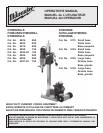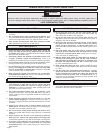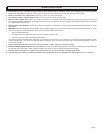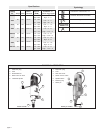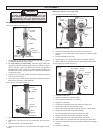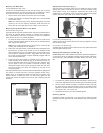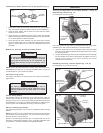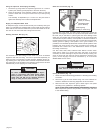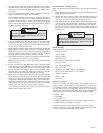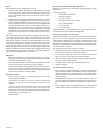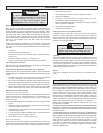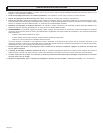
page 7
Adjusting the Gib Screws (Fig. 7)
After the motor is mounted, make sure the cradle and motor are rigid
against the column to prevent the motor or bit from wobbling during
coring. Before coring, try to wiggle the cradle with your hands. If the
cradle is secure, it should not move. If it does move, tighten the six (6) gib
screws that secure the cradle to the column as follows.
Fig. 7
Gib
Screws
Copper
Washer
Fig. 8
Water
Control
Valve
1. To install a bit, grease the spindle and bit threads to prevent corro-
sion and to help prevent the bit from seizing on the threaded spindle.
2. Slip one copper washer (provided in separate accessory bag with
the water shut-off valve components) onto the threaded spindle
against the spindle shoulder. The bag should contain an extra cop-
per washer; save it for future use.
3. Thread the bit securely onto the threaded spindle.
Selecting Speeds
Dymodrills operate in either high or low gear. Use low speed for large
diameter bits and high speed for small diameter bits (see "Specifica-
tions").
Selecting and Installing a Core Bit (Fig. 8)
MILWAUKEE offers both standard and premium Dymobits designed to
cut through a variety of materials including poured concrete, steel-rein-
forced concrete, and prestressed concrete. Always use clean, sharp
bits.
For Cat. No. 4125 & 4130 only.
Tighten the six (6) gib screws with the hex wrench (supplied in a sepa-
rate accessory bag).
For Cat. No. 4115 & 4120 only.
To tighten the six (6) gib screws: loosen the hex nuts, tighten the screws
and then tighten the hex nuts.
Mounting the Dymodrill Motor to the Stand
For All Cat. Nos. (Fig. 5 & 6).
Dymorigs include a mounting bracket which mounts Dymodrill motors to
the stand. An optional spacer assembly is available (see "Accesso-
ries"), which can be used when coring with any bits; but it must be
used with any bit over 10" (outside diameter).
1. To mount the motor, loosen the cradle lock. Raise the cradle on the
column using the spoked handle to allow room for installing the bit
later. Tighten the cradle lock.
NOTE: If the cradle is difficult to move on the column, loosen the gib
screws (see "Adjusting the Gib Screws").
2. Fasten the mounting bracket or the optional spacer assembly to the
Dymodrill (Fig. 5) motor using the four (4) 1/4"-20 threaded socket
head screws and four (4) lock washers (they are the smaller of the
two provided in separate accessory bag). Make sure the square
key on the mounting bracket or spacer assembly engages with the
slot on the Dymodrill motor.
3. Fasten the mounting bracket (or optional spacer assembly) and
motor assembly to the cradle slot (Fig. 6) by inserting the four (4)
3/8"-16 threaded socket head cap screws and lock washers (they
are the larger of the two provided in separate accessory bag)
through the cradle. Place screws through the holes from the other
side of the Dymorig and place lock washers on the side of the
mounting bracket.
After the Dymodrill motor is mounted, make sure the cradle is rigid against
the column to prevent the motor or bit from wobbling during coring.
Before coring, try to wiggle the cradle and motor with your hands. If the
cradle is secure, it should not move. If it does move, tighten the gib
screws that secure the cradle to the column (see "Adjusting the Gib
Screws").
Mounting the Meter Box
For All Catalog Nos. (Fig. 3 & 4).
A meter box is standard equipment with the Vac-U-Rig
®
, but it must be
purchased separately for other Dymorigs (see "Accessories"). Attach
the meter box to the cradle on the side opposite of the handle.
1. Slip the collar on the meter box over the stud on the cradle.
2. Position the meter box as desired and tighten the 1/4"-20 threaded
socket head screw.
NOTE: For horizontal (wall) coring, the ammeter gauge must face
upward in view of the operator. Otherwise, water flow from the
water shut-off valve might drip into the outlets on the meter box.
Slot
Fig. 6
Fig. 5



